View current page
...more recent posts
Carol Vogel's New York Times story today on the art world topic of "younger and younger, what can you do about it?":
Jack Tilton arrived at Columbia University on a recent Saturday with a camera around his neck and a venture capitalist by his side. It was a busy day for Mr. Tilton, a Manhattan dealer known for exhibiting the art of graduate students. He looked at the work of 26 students in their first year of a Master of Fine Arts program at Columbia, then struck out for New Haven to do the same thing at Yale. John Friedman, the venture capitalist, made that part of the tour a week later.Tough lead paragraph, it's sad that it's come to this for Tilton--shooting fish in a barrel, hungry for love.
Update: Aaron Yassin says in the comments:
It's unfortunate that this is the topic for the rare article on the visual arts for which the New York Times chooses to devote one quarter of the front page. What bothers me as much is when Carol Vogel says this: "...while first-rate artworks for sale decrease, dealers and collectors are scouring the country's top graduate schools..." The implication that the reason for this phenomenon is that all "first-rate" work is hard to come by is preposterous. Rather, this seems typical of our culture’s infatuation with youth. Instead of just admitting this, Vogel has to make some other kind of excuse like focusing on buying the work of younger and younger artists is really because there’s nothing else available.My reply:
UnfortunatelyThe great unspokens here are that 95% of art graduates stop making work once they get out of the supportive, structured environment of school, unless they get "picked up," and then they start doing bad work about two years out of school (and stop altogether a few years after that). The five percent who keep making art, year-in year-out, pickup or no pickup, are nutty, driven individuals and a pain in the neck for dealers. But it is from that possibly sexually unattractive minority, not "the country's top graduate schools," that most work (and therefore most good work) comes. Youthful energy is important, but in more cases than "the market" is prepared to admit, it wanes quickly."...while first-rate artworks for sale decrease, dealers and collectors are scouring the country's top graduate schools..."is the widely-accepted wisdom of our current tulip mania bubble market. Almost no one in the market is in a position to disagree with this.
Vogel deserves more credit in my opinion for exposing this shaky logic to the world, by interviewing students embarrassed by the attention, school administrators mouthing fatuities, etc. She's leaving it to the reader to draw the conclusion that youth=value is demented, that the dealers and collectors are insecure and/or skanky, and that the schools are pimps, or at best, enablers.
Update 2: It's doubtful there are hard statistics on the art world dropout rate. Who would finance such a study? Based on years of watching "scenes" come and go I'd say the 95/5 numbers are conservative.
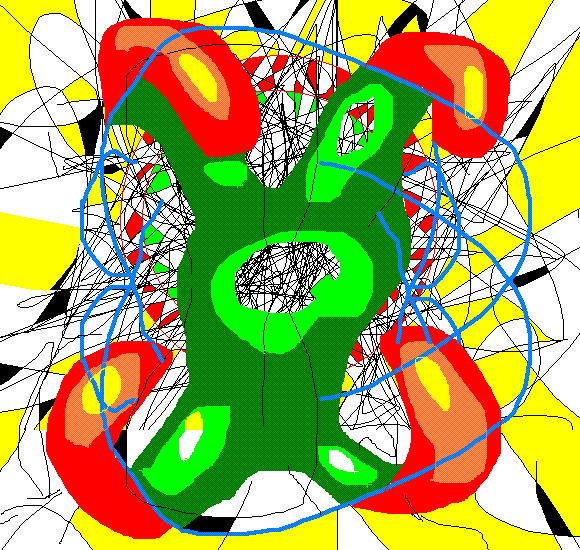
Have been listening to more music by composer Paul Lansky, since encountering his work on the OHM "electronic music gurus" CD/DVD. His mp3 page is here. In some pieces he uses the computer behind the scenes, "automatically" writing scores that humans would find difficult or impossible to play. Other works are found sounds, like traffic noises or conversations, quantized or processed tonally. He's a musician as much as a geek, very melodic and modern at the same time. Be sure to check out "Odd Moments," scored for traditional instruments, reminiscent of Copland and Ravel, with a hint of Michael Nyman, but with Lansky's characteristic "smoothness," not in the sense of smooth jazz but in the unusual, somewhat melancholy feel he gets by eschewing harsh attack sounds.
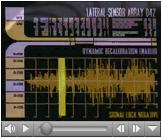
"Sensor Readings" [27 MB .mp4]
This is a sketch. My plan is to brighten and crispen the image, but since that will involve custom tweaking about 50 frames, I'm procrastinating. Batch processing only gets you so far. I might play around with the erratic "cursor" movement some more, but I'm resisting point-to-point, "follow the bouncing ball" closure here, in case that's not obvious.
Update: Having said all that, now I'm working on the timing. I don't want to use a ruler, so I'm matching clips to beats by eye. In this consumer program I'm using, any deletion in the timeline shortens the whole timeline (i.e., you can't use markers to pin your finished work in place), so it's taking a ridiculous amount of time. It's harder to make something clunky than something slick, in my experience. The image is brightened up, at least; I batch-processed the panels using "auto-contrast" and then finally figured out how to uniformly crop each panel in Photoshop using "snap to grid." I now have a GIF where the cursor rolls more smoothly than in the motion captures used in the above .mov, it's just a question of chopping it up in a way that accentuates rather than distracts from the tune.
Update 2: As discussed, the file has been brightened and the timing is tighter now. I replaced the old file--it's about 10 MB bigger.
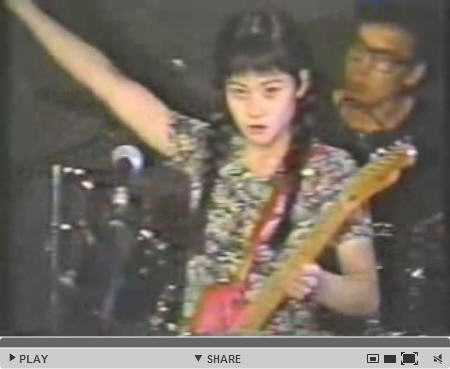
sunaba - renge no atama (beefheart/henry cowish--nice!) [YouTube]
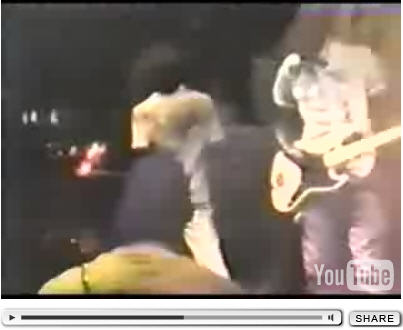
Bad Brains "At the Movies" (live, 1979) [YouTube]
Washington DC band during their punk phase. Loose, proto-MTV intro with White House in background; Dr. Know rocks out; HR does a backflip at the end--Yes!
"Sensor Readings (Audio)" [mp3 removed]
Update: this is now a vid soundtrack so I retitled it from "Wow and Fluster" to its current name.
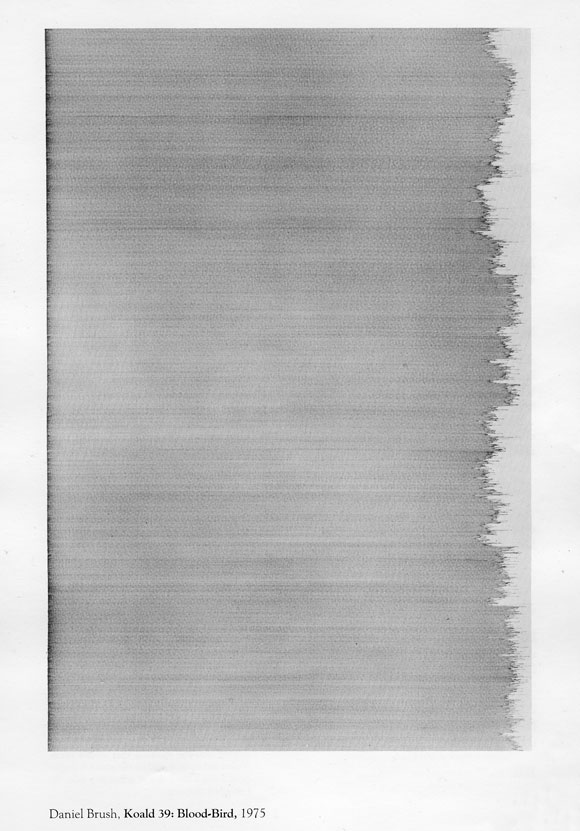
"With drafting pen in hand, and who knows what in mind, [Daniel] Brush spends countless hours penning the same line. The works he thus composes are nearly 10 feet tall, and, I think, imposing. Delicate yet dreary, humble, yet while humble pompous, they seem the work of someone who finds liberation through enslavement. The trip is his, not mine." --Paul Richard, Washington Post, 1975, reviewing "Five Washington Artists" at the Corcoran Gallery. Brush now lives in New York and makes intricate work with gold.
